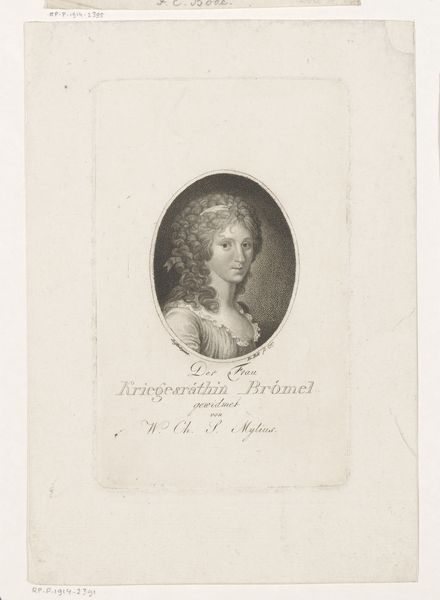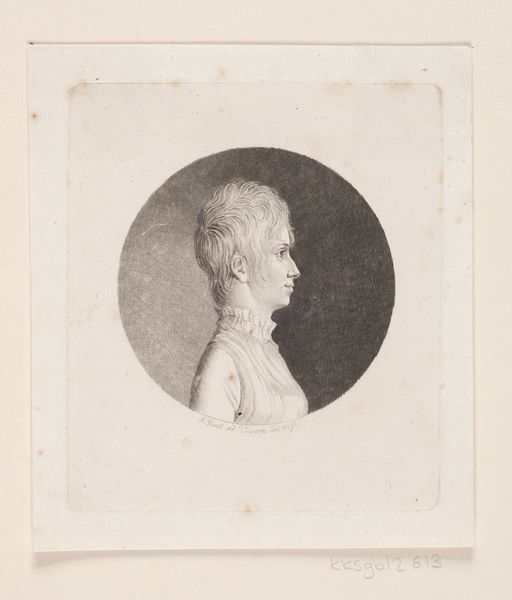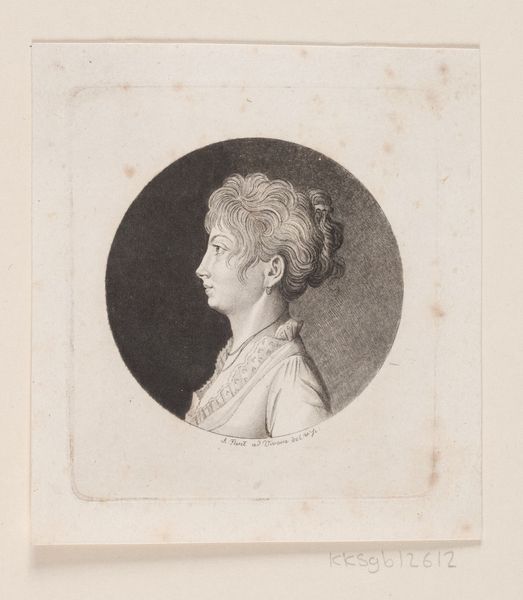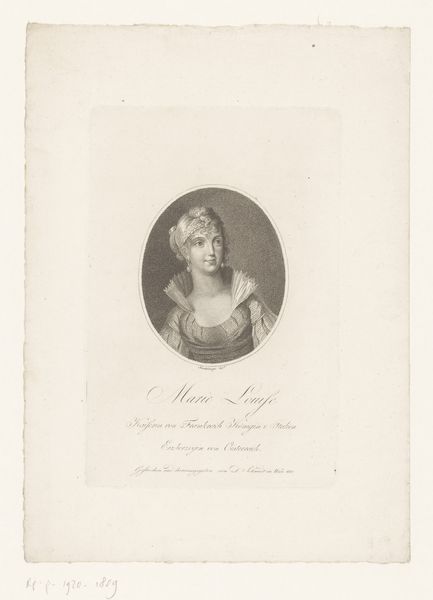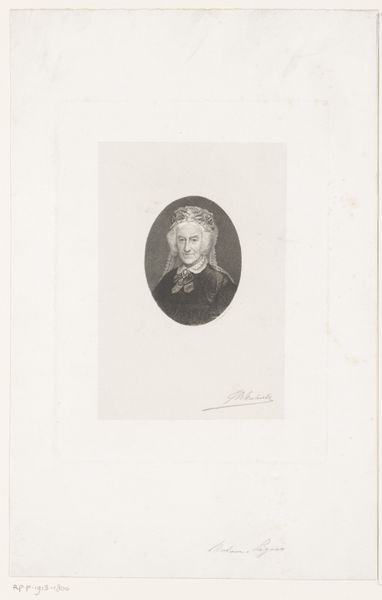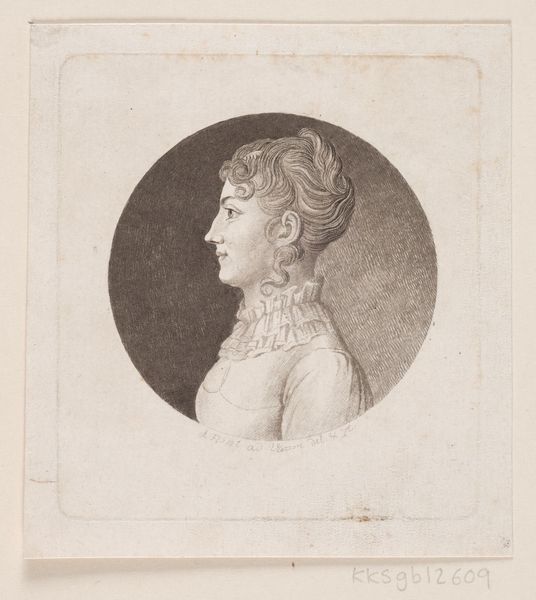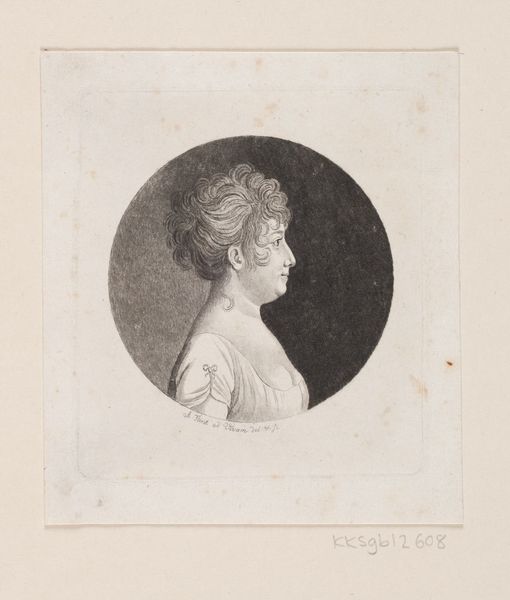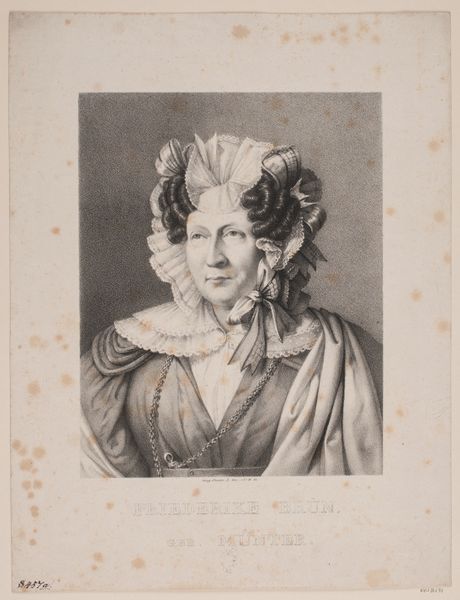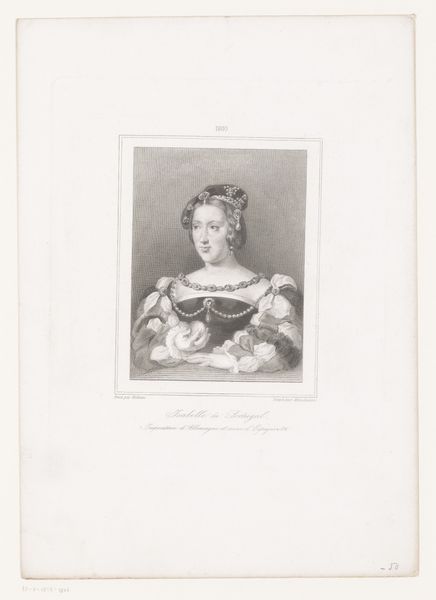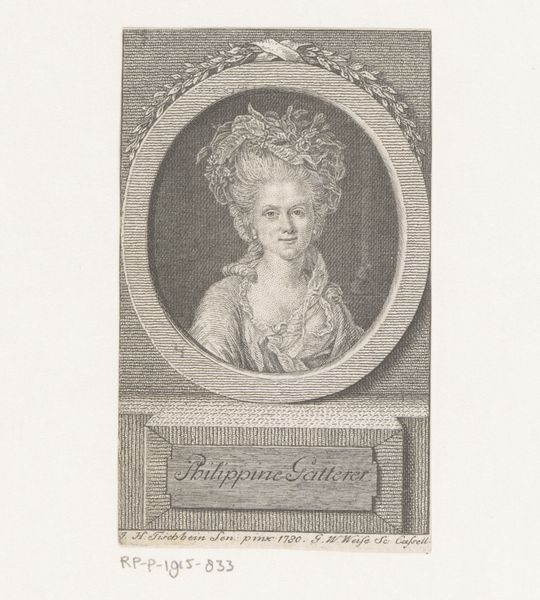
drawing, engraving
#
portrait
#
pencil drawn
#
drawing
#
neoclacissism
#
pencil sketch
#
pencil drawing
#
pencil work
#
history-painting
#
engraving
Dimensions: height 266 mm, width 187 mm
Copyright: Rijks Museum: Open Domain
Curator: Let’s turn our attention to this captivating engraving from 1791. It’s titled “Portret van beeldhouwer Anne Seymour Damer” and was created by Luigi Schiavonetti. The work is currently held at the Rijksmuseum. Editor: It’s so delicate, isn't it? There’s a subtle elegance in its monochrome palette, a lightness of being achieved with these very intentional, almost mechanical marks. I’m particularly drawn to the way the material--presumably an etching or engraving--captures the subject's presence. Curator: Indeed. Let’s consider the context. Anne Seymour Damer was herself a remarkable sculptor during the neoclassical period; in representing Damer, Schiavonetti engages in a conversation about women in the arts and crafts and the role of creativity during her time. How does portraying an artist of Damer's stature impact the perception and recognition of female creators within what was largely a patriarchal sphere? Editor: I see that too. The craft speaks to a specific class. The ruffles on her dress seem painstakingly etched. Were these representations consumed mostly by the wealthy at the time, creating a circulation and performance of class? Curator: Absolutely. Consider also how neoclassicism influences the portrait. We observe it in the clean lines, in the idealization of the figure, even in the relative austerity of the composition. It reflects a cultural yearning for the perceived rationality and order of ancient Greece and Rome, yet simultaneously places Anne Damer in dialogue with contemporary conversations on artistry and feminine virtue. The medium itself facilitates dissemination and underscores a desire for democratized knowledge. Editor: Fascinating how it functions both as a representation of status and perhaps, paradoxically, aims for a kind of broader circulation. What initially reads as simplicity might have been meticulously calculated labor. How many hours went into replicating those curls and delicate lace? I wonder how accessible that labor would be today given digital methods. Curator: Looking closely, it’s important to consider that Anne Seymour Damer was more than a sculptor; she was a figure who challenged societal norms. We could examine her relationships, her intellectual circle, and her deliberate navigation of gender roles. Schiavonetti’s portrait captures Damer in her complexities, inviting us to question the artist’s identity and contributions. Editor: Exactly. This print, so easily glossed over as a mere "portrait," holds layers of intention and process when considered with a material lens. I feel there’s a beautiful complexity to unpack here around labor and production—it resonates far beyond a surface level portrait. Curator: Absolutely. I think the conversation it ignites around gender, labor, and artistic expression renders this more than a neoclassical portrait. Editor: Indeed, quite a bit to contemplate as we move forward.
Comments
No comments
Be the first to comment and join the conversation on the ultimate creative platform.
